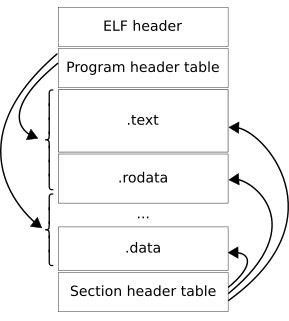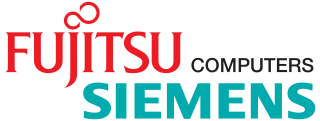External links
- Siemens Business Services - SINIX patches and support
- The SINIX operating system
- Sven Mascheck, SINIX V5.20 Universes
| Divisions and subsidiaries |
| |||||
|---|---|---|---|---|---|---|
| Joint ventures and shareholdings |
| |||||
| Products, services and standards |
| |||||
| People | ||||||
| Places | ||||||
| Other | ||||||
| Developer | Siemens Nixdorf Informationssysteme, Fujitsu Siemens Computers |
|---|---|
| OS family | UNIX System V |
| Working state | Discontinued |
| Source model | Closed source |
| Initial release | 1984 |
| Latest release | 5.43 (SINIX), 5.45 (Reliant UNIX) / 1995 (SINIX) |
| Platforms | NSC-32x32, Intel 80186, Intel 80386, Intel 80486, MIPS |
| Kernel type | Monolithic kernel |
| Userland | SUS |
| License | Proprietary |
| Official website | Reliant UNIX/SINIX |
SINIX is a discontinued variant of the Unix operating system from Siemens Nixdorf Informationssysteme. SINIX supersedes SIRM OS and Pyramid Technology's DC/OSx. Following X/Open's acceptance that its requirements for the use of the UNIX trademark were met, version 5.44 and subsequent releases were published as Reliant UNIX by Fujitsu Siemens Computers.
In some versions of SINIX (5.2x) the user could emulate the behaviour of a number of different versions of Unix (known as universes ). These included System V.3, System III or BSD. Each universe had its own command set, libraries and header files.
The original SINIX was a modified version of Xenix and ran on Intel 80186 processors. For some years Siemens used the NSC-32x32 (up to Sinix 5.2x) and Intel 80486 CPUs (Sinix 5.4x - non MIPS) in their MX-Series.
Later versions of SINIX based on System V were designed for the:
The last release under the SINIX name was version 5.43 in 1995.
The last Reliant UNIX versions were registered as UNIX 95 compliant (XPG4 hard branding).
The last release of Reliant UNIX was version 5.45.

In computing, the Executable and Linkable Format, is a common standard file format for executable files, object code, shared libraries, and core dumps. First published in the specification for the application binary interface (ABI) of the Unix operating system version named System V Release 4 (SVR4), and later in the Tool Interface Standard, it was quickly accepted among different vendors of Unix systems. In 1999, it was chosen as the standard binary file format for Unix and Unix-like systems on x86 processors by the 86open project.

Silicon Graphics, Inc. was an American high-performance computing manufacturer, producing computer hardware and software. Founded in Mountain View, California in November 1981 by Jim Clark, its initial market was 3D graphics computer workstations, but its products, strategies and market positions developed significantly over time.

HP-UX is Hewlett Packard Enterprise's proprietary implementation of the Unix operating system, based on Unix System V and first released in 1984. Current versions support HPE Integrity Servers, based on Intel's Itanium architecture.

Xenix is a discontinued version of the Unix operating system for various microcomputer platforms, licensed by Microsoft from AT&T Corporation in the late 1970s. The Santa Cruz Operation (SCO) later acquired exclusive rights to the software, and eventually replaced it with SCO UNIX.
In computer architecture, 64-bit integers, memory addresses, or other data units are those that are 64 bits wide. Also, 64-bit CPUs and ALUs are those that are based on processor registers, address buses, or data buses of that size. A computer that uses such a processor is a 64-bit computer.
Casio Cassiopeia was the brand name of a PDA manufactured by Casio. It used Windows CE as the Operating system. Casio was one of the first manufacturers of PDAs, developing at the beginning small pocket-sized computers with keyboards and grayscale displays and subsequently moving to smaller units in response to customer demand.
Pyramid Technology Corporation was a computer company that produced a number of RISC-based minicomputers at the upper end of the performance range. It was based in the San Francisco Bay Area of California

Intel's i960 was a RISC-based microprocessor design that became popular during the early 1990s as an embedded microcontroller. It became a best-selling CPU in that segment, along with the competing AMD 29000. In spite of its success, Intel stopped marketing the i960 in the late 1990s, as a result of a settlement with DEC whereby Intel received the rights to produce the StrongARM CPU. The processor continues to be used for a few military applications.
The Advanced Computing Environment (ACE) was defined by an industry consortium in the early 1990s to be the next generation commodity computing platform, the successor to personal computers based on Intel's 32-bit instruction set architecture. The effort found little support in the market and dissolved due to infighting within the group and a lack of sales.
AT&T Computer Systems is the generic name for American Telephone & Telegraph's unsuccessful attempt to compete in the computer business. In return for divesting the local Bell Operating Companies, AT&T was allowed to have an unregulated division to sell computer hardware and software. The company made the 3B series computers.
The Jazz computer architecture is a motherboard and chipset design originally developed by Microsoft for use in developing Windows NT. The design was eventually used as the basis for most MIPS-based Windows NT systems.

Fujitsu Siemens Computers GmbH was a Japanese and German vendor of information technology. The company was founded in 1999 as a 50/50 joint venture between Fujitsu Limited of Japan and Siemens of Germany. On April 1, 2009, the company became Fujitsu Technology Solutions as a result of Fujitsu buying out Siemens' share of the company.
Xinu Is Not Unix, is an operating system for embedded systems, originally developed by Douglas Comer for educational use at Purdue University in the 1980s. The name is both recursive, and is Unix spelled backwards. It has been ported to many hardware platforms, including the DEC PDP-11 and VAX systems, Motorola 68k, Intel x86, PowerPC G3, MIPS, ARM architecture and AVR (atmega328p/Arduino). Xinu was also used for some models of Lexmark printers.

The R4000 is a microprocessor developed by MIPS Computer Systems that implements the MIPS III instruction set architecture (ISA). Officially announced on 1 October 1991, it was one of the first 64-bit microprocessors and the first MIPS III implementation. In the early 1990s, when RISC microprocessors were expected to replace CISC microprocessors such as the Intel i486, the R4000 was selected to be the microprocessor of the Advanced Computing Environment (ACE), an industry standard that intended to define a common RISC platform. ACE ultimately failed for a number of reasons, but the R4000 found success in the workstation and server markets.

The R5000 is a 64-bit, little endian (mipsel) superscalar, in-order execution 2-issue design microprocessor, that implements the MIPS IV instruction set architecture (ISA) developed by Quantum Effect Design (QED) in 1996. The project was funded by MIPS Technologies, Inc (MTI), also the licensor. MTI then licensed the design to Integrated Device Technology (IDT), NEC, NKK, and Toshiba. The R5000 succeeded the QED R4600 and R4700 as their flagship high-end embedded microprocessor. IDT marketed its version of the R5000 as the 79RV5000, NEC as VR5000, NKK as the NR5000, and Toshiba as the TX5000. The R5000 was sold to PMC-Sierra when the company acquired QED. Derivatives of the R5000 are still in production today for embedded systems.
In some versions of the Unix operating system, the term universe was used to denote some variant of the working environment. During the late 1980s, most commercial Unix variants were derived from either System V or BSD. Most versions provided both BSD and System V universes and allowed the user to switch between them. Each universe, typically implemented by separate directory trees or separate filesystems, usually included different versions of commands, libraries, man pages, and header files. While such a facility offered the ability to develop applications portable across both System V and BSD variants, the requirements in disk space and maintenance gave them a problematic reputation. Systems that offered this facility included Harris/Concurrent's CX/UX, Convex's Convex/OS, Apollo's Domain/OS, Pyramid's DC/OSx, Concurrent's Masscomp/RTU, MIPS Computer Systems' RISC/os, Sequent's DYNIX/ptx and Siemens' SINIX.
DC/OSx (DataCenter/OSx) is a discontinued Unix operating system for MIPS based systems developed by Pyramid Technology. It ran on its Nile series of SMP machines and was a port of AT&T System V Release 4 (SVR4). In 1995, Pyramid Technology was acquired by Siemens Nixdorf Informationssysteme (SNI), and DC/OSx was superseded by the SINIX operating system.

Fujitsu Technology Solutions is a European information technology vendor with a presence in markets in Europe, the Middle East, Africa, as well as India. A subsidiary of Fujitsu Limited headquartered in Tokyo, Japan, FTS was founded in 2009 after Fujitsu bought out Siemens' 50% share of Fujitsu Siemens Computers.
The ICL DRS was a range of departmental computers from International Computers Limited (ICL). Standing originally for Distributed Resource System, the full name was later dropped in favour of the abbreviation.